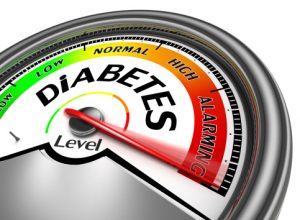
When a person has prediabetes, their blood sugar level is higher than normal, but not high enough to be considered diabetic. This does put the person at a much higher risk for developing type 2 diabetes, as well as other serious health conditions. Studies show that about 15 to 20 percent of people with prediabetes who do not make lifestyle adjustments will develop type 2 diabetes within five years.
A report published in the Journal of the American Medical Association last year indicates that about 37 percent of Americans have prediabetes.
Prediabetes can increase the risk of kidney failure
Researchers with the nephrology department at University Hospital of North Norway believe that kidney damage occurs with prediabetes. They studied over 1,300 patients and identified 595 with prediabetes. They adjusted for lifestyle factors such as medications and discovered that those with the condition had early signs of kidney damage, including high levels of the protein albumin in their urine.
The team stated that the pathological process of kidney damage created by elevated blood glucose levels seemingly starts in prediabetes “well before the onset of diabetes”.
Normal blood sugar levels are important to good kidney health. Diabetic kidney damage takes place when high blood sugar levels are chronic. Data shows that diabetes is the leading cause of kidney disease and kidney failure.
People who experience kidney failure need to either go on dialysis, a treatment that artificially filters their blood, or must get a kidney transplant. Diabetic kidney damage, and ultimately kidney failure, happens over a period of years. As the disease develops, small amounts of the protein albumin begin to leak into the patient’s urine. The greater the leak, the more the disease progresses. Kidney failure typically begins 15 to 25 years after the diabetes.
According to officials with the National Kidney Foundation, more than 470 million Americans are expected to have prediabetes by 2030. The authors of the Norwegian study suggest prediabetes be a stage for early intervention, including changes to diet and introduction of exercise programs to prevent serious kidney damage from diabetes.
Factors that increase risk of prediabetes
- Being overweight
- Inactive lifestyle
- High blood pressure
- High cholesterol
- History of cardiovascular disease
- African American, American Indian, Asian American, Hispanic/Latino, Pacific Islander, or Alaska Native race
- Age – the older we get the higher the chances
- Polycystic Ovary Syndrome
- Large waist circumference
There is also a set of “unique” risk factors that contribute to prediabetes. They include, having a family history of diabetes, being diagnosed with gestational diabetes (during pregnancy), or giving birth to a baby weighing more than nine pounds.
What causes prediabetes
Medical scientists have said that family history and genetics appear to have a role in prediabetes, but the exact cause remains unknown. Studies show that excess fat – especially around the stomach area – is factors in the development of prediabetes. What we do know for certain is that people with prediabetes aren’t processing sugar or glucose like they used to. As a result, sugar builds up in the bloodstream when it is supposed to be giving energy to our cells to form muscles and other tissues.
During digestion, sugar enters our bloodstream. With help from insulin, it enters the cells and is used for energy. The sugar or glucose comes from all sorts of foods we eat, including carbohydrates. This means people have to remember that carbs, not just sweet treats, do impact our blood sugar level. When we eat, our pancreas releases the hormone known as insulin into our bloodstream. Essentially, insulin helps lower the amount of sugar in our bloodstream. When the blood sugar level drops, insulin secretion drops, too. However, if you have prediabetes, your pancreas doesn’t make enough insulin or your cells become resistant to the insulin. In some cases, both can happen.
Prediabetes prevention and diet tips
When it comes to diet, a lot of people get hung up on what they are putting in their mouths, but experts say when it comes to prediabetes and diabetes, it is the amount that is most important. You might want to consider working with a dietician to determine the right portion sizes for different types of food.
Food choices that cut down on fat should be the focus of the diet. Below are some suggestions.
- Cut back on butter when cooking.
- Eat broiled not fried food.
- Eat more chicken and fish, as well as lean beef only.
- Eat more vegetables and fruit, but less meat.
Having prediabetes doesn’t mean that you can’t enjoy a treat once in a while. Dieticians say, it is all about control – it’s about cutting back on portions and planning a piece of cake or pie for special occasions.
If you have a family member, parents, or siblings who have prediabetes or type 2 diabetes, if you have a few extra pounds around your middle, or if you know you are inactive, you might want to consider getting your blood glucose level tested. Some experts suggest getting your A1C, which is an average of your blood glucose, checked over two to three months.
Related Readings:
CDC urges to check your risk for diabetes
The Centers for Disease Control and Prevention (CDC) urges individuals to check their risk for diabetes as 86 million Americans are prediabetic knowing your risks and reducing them can spare you a diagnosis of prediabetes. Continue reading…
Pyelonephritis (kidney infection) caused by E. coli bacteria can increase the risk of kidney damage and sepsis. Pyelonephritis is a type of urinary tract infection (UTI) typically caused by E. coli bacteria. The bacteria can spread from the bladder or the urethra to either one or both of the kidneys. Continue reading…
Sources:
http://www.cdc.gov/diabetes/basics/prediabetes.html
https://www.nlm.nih.gov/medlineplus/news/fullstory_156445.html
http://www.ajkd.org/article/S0272-6386(15)01389-X/abstract
https://www.kidney.org/news/kidneyCare/Summer10/PreDiabetes
http://www.mayoclinic.org/diseases-conditions/prediabetes/basics/risk-factors/con-20024420
http://www.joslin.org/info/what_is_pre_diabetes.html
https://www.sciencedaily.com/releases/2015/09/150908112428.htm